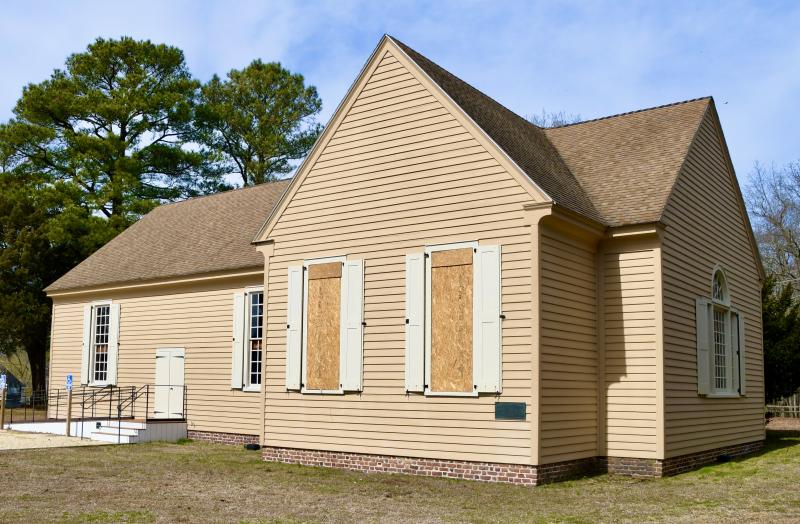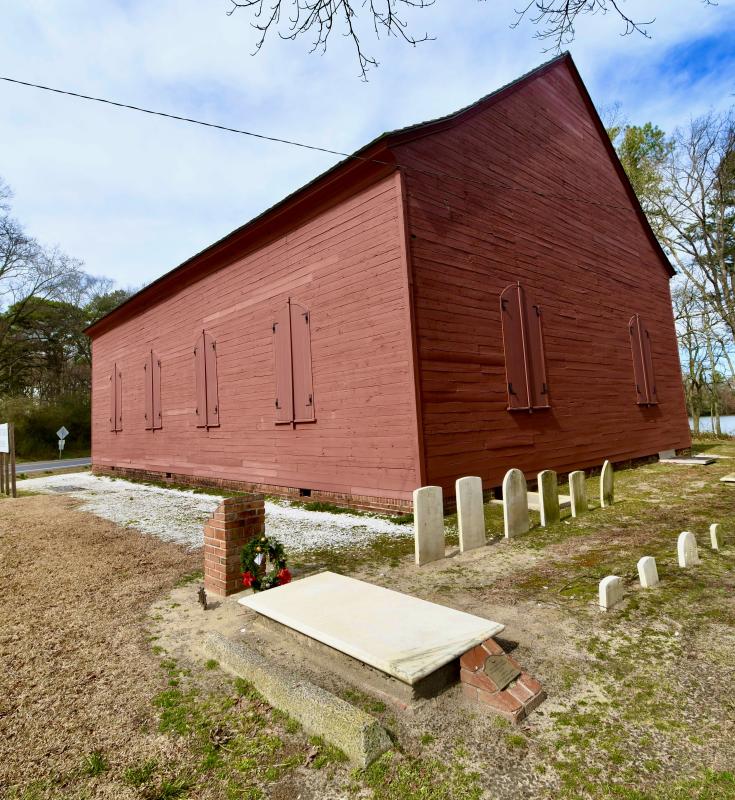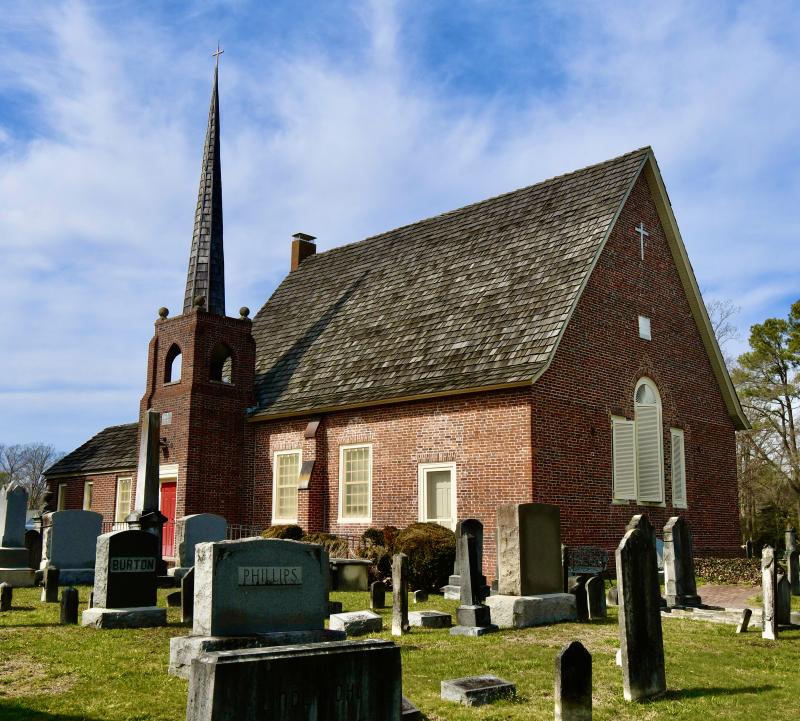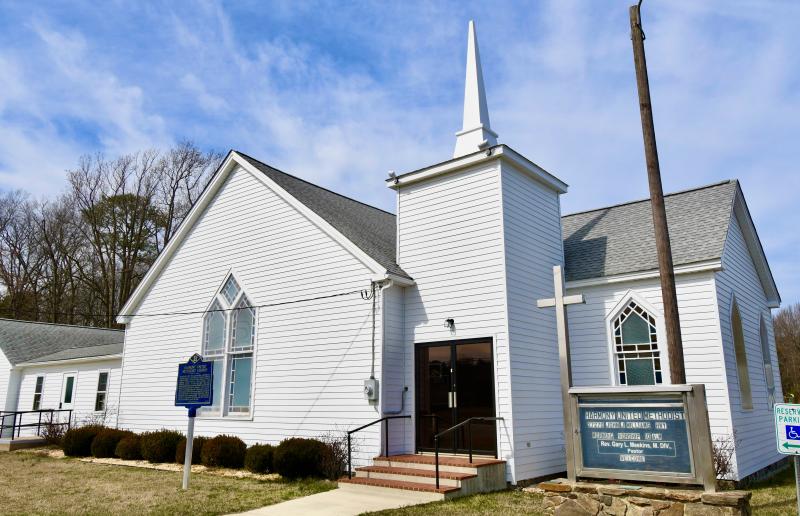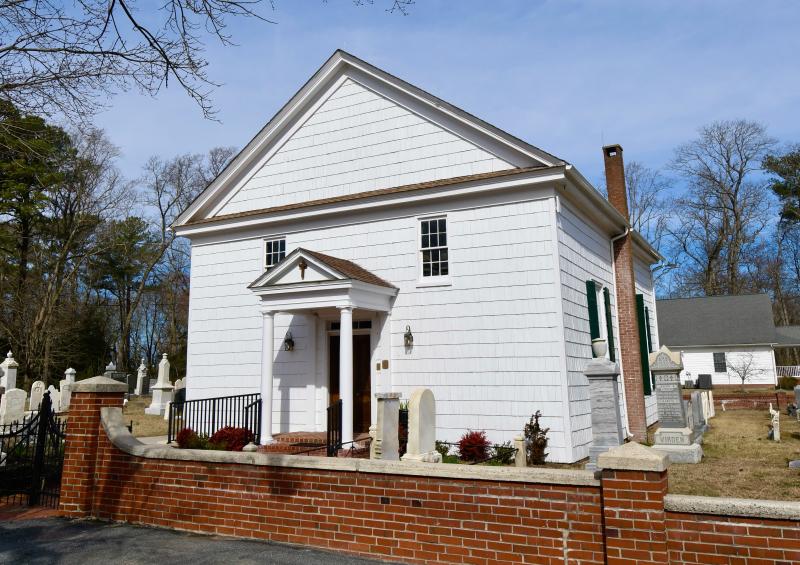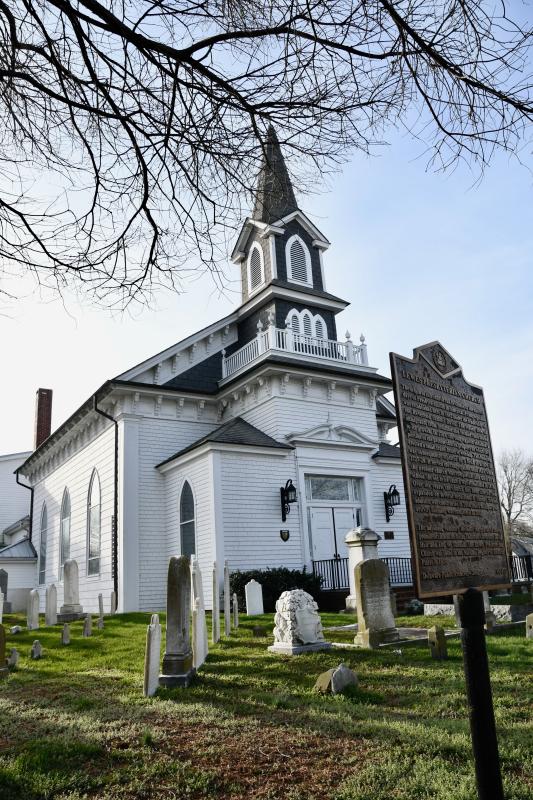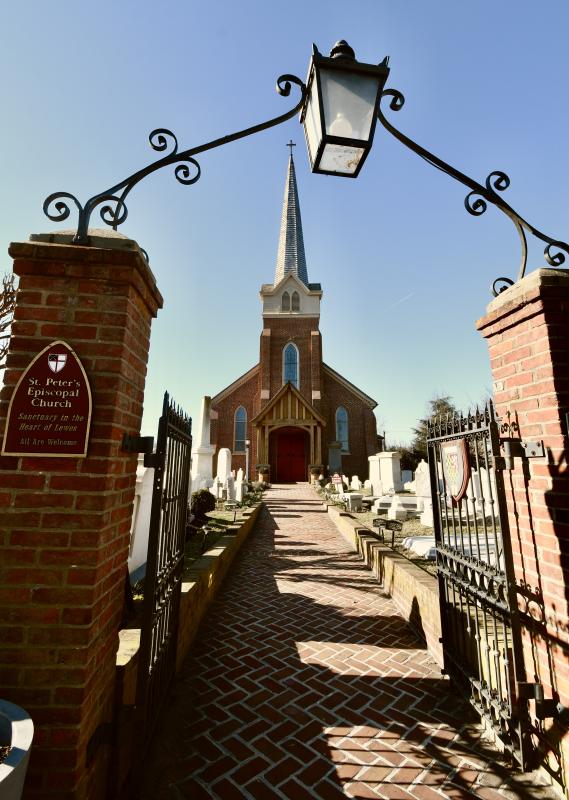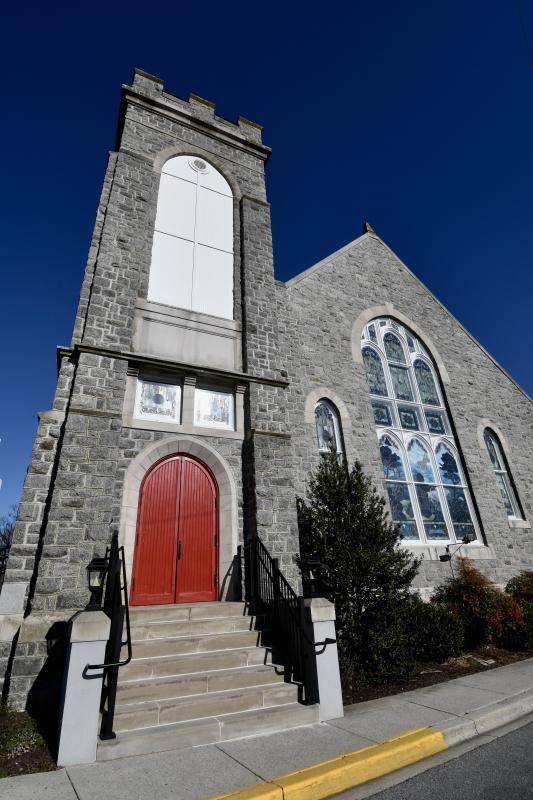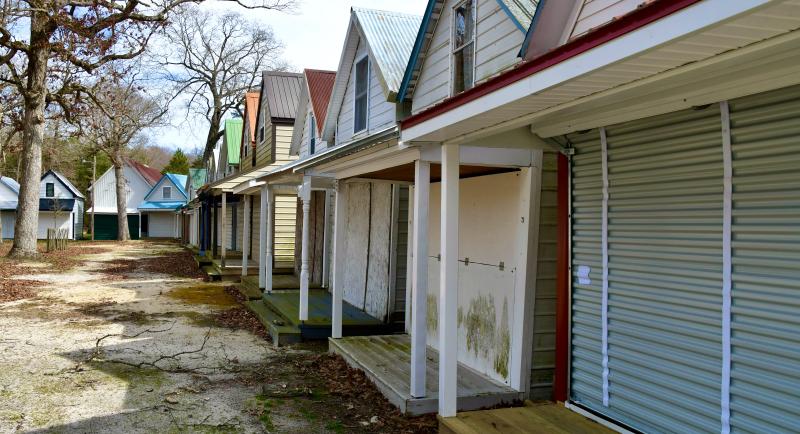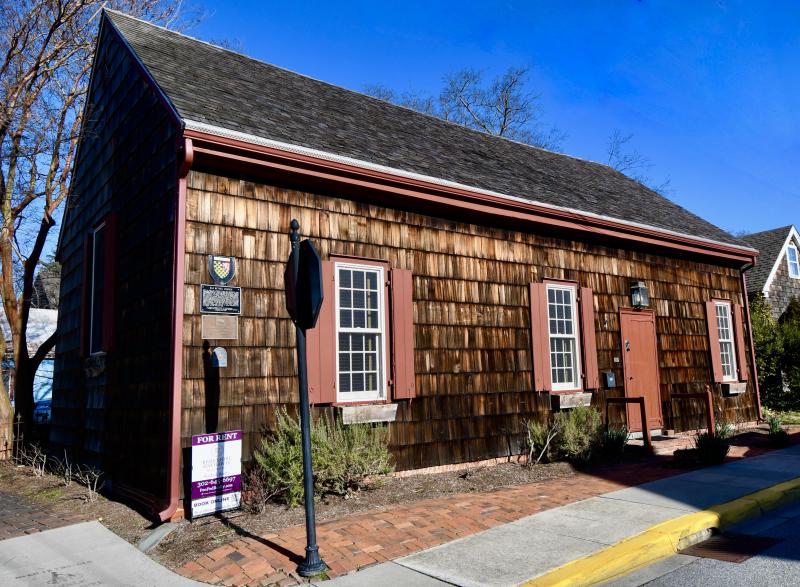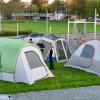What is the oldest church in Sussex County?
I’m going down a rabbit hole this week. I knew when I started researching old churches in Sussex County that it would be an almost impossible task.
There is so much church history in the county that one column can’t possibly cover it all.
Trust me, what follows is only a sampling.
Oldest churches in Sussex
Some churches have roots that go back to the 18th century and even the late 17th century, but the original church building no longer exists.
Many churches are on the same site where they were founded but have since built two or three more buildings over the years. Many have moved to other locations.
But there are at least four 18th-century churches still standing – St. George’s Chapel near Lewes (1719 and rebuilt in 1792), Old Christ Church near Laurel (1772), Prince George’s Chapel near Dagsboro (1775) and Old Bethel Church in Lewes (1790).
St. George’s is the only church still in use on a regular basis with Sunday services each week.
Country churches
Sussex was a rural area in the 18th century. Farming was the mainstay of the county, and small country churches sprang up all over the county to support the families. The churches were the focal point of their communities.
Many churches were parts of charges where ministers preached at more than one church.
Early churches were usually Presbyterian, Episcopalian or Methodist. The oldest churches date back before there was a United States, as people seeking religious freedom left England to establish their own churches.
And some old churches date back to a time when southwestern Sussex County was actually claimed by Maryland also including Dagsboro Hundred and Baltimore Hundred.
The earliest reference I can find to an organized congregation dates back to 1662 when Mennonites met in an area along Savannah Road at the site of the Ebenezer Cemetery. After two years, the British supposedly burned down the church. The church was part of the Plockhoy Colony where people worked for the benefit of the community.
Camp meetings
Camp meetings were also popular. This is where church members would gather outside in a camp-like setting and attend services in the camp’s tabernacle.
Rehoboth Beach can trace its roots back to 1873 when the Rev. Robert Todd purchased 400 acres of what is now prime real estate to form the Rehoboth Beach Camp Meeting Association of the Methodist Episcopal Church.
One of few remaining sites in use on Delmarva is Carey’s Camp near Millsboro, which dates back to 1888. For two weeks each summer, people gather to stay in their cottages, which surround a worship tabernacle.
Old churches in the county
Unfortunately, the oldest Presbyterian church in the county was demolished in 2018. Blackwater Presbyterian Church on Route 54 near Clarksville dates back to 1767 and was rebuilt in 1893. Services were stopped in 1921. In spite of a restoration project, the church deteriorated and was torn down.
St. George’s Chapel, on Beaver Dam Road near Lewes, was built in 1719 and then rebuilt after a fire in 1792. Since 1938, the brick structure has been affiliated with All Saints’ Episcopal Church in Rehoboth Beach. It was originally built by St. Peter’s Church in Lewes. All Saints’, built in 1892-93, is the only church in Rehoboth still on its original site.
Old Christ Church is an Anglican-Episcopal church and also known as Old Lightwood, although its exterior is barn red. Profits from tobacco helped to build a “chapel of ease” in 1772. At the time, the land was claimed by Maryland and Delaware. It took the Mason-Dixon Line to settle the boundary dispute, which doubled the size of Sussex County.
It’s one the few remaining historic churches that does not have plumbing or electricity. The wooden interior – except for painted window sashes – has remained the same for more than 250 years.
Here’s a bit of trivia: the church charged its members $5 per year for pew rent.
Today, the church is affiliated with St. Phillip’s Episcopal Church in Laurel and is maintained by the Old Christ Church League. Special services are held there at an impressive reflection patio on the shores of Chipman’s Pond.
Prince George’s Chapel, named for the prince who would become King George III, was built in 1775 in Maryland before a boundary dispute was settled and the area become part of Delaware.
Presbyterians in the area spearheaded a drive to get the church built. But by 1859, the church was deteriorating and services were suspended. Although annual services have been held throughout the years, the building is now maintained by the Episcopal Diocese of Delaware as a historic site. It was restored in 1928-29 and eventually the state took ownership in 1967.
Old Bethel Church was built in 1790 on the corner of Third and Market streets in Lewes and then moved to the corner of Church and Market streets, where it was replaced by the structure there today. It was no longer needed, and in 1870, it was sold and turned into two residences. Today, it is a residence that serves as a rental.
Old Bethel continued on to become Bethel United Methodist Church in 1910 on West Fourth Street.
This Old Bethel building and Barratt’s Chapel near Frederica are the only two remaining Methodist Meeting Houses in the state.
A good example of a church with deep roots is Cool Spring Presbyterian Church on Log Cabin Hill Road near Lewes. It dates back to congregations meeting in homes as early as the 1700s. Irish immigrants, known as Ulster Scots, established a church in 1726, and in 1787, the Delaware General Assembly officially recognized the United Presbyterian churches in Lewes, Cool Spring and Indian River.
The present church was dedicated Jan. 14, 1855. It underwent a major restoration project in 2021, including a repainting of the exterior. Painters from Coastal Colors removed as many 20 layers of paint.
There is a record of a Cool Spring Friends Meeting House on Red Mill Pond near Lewes dating back to 1742. The church was abandoned in 1839.
Lewes Presbyterian Church also has long roots dating back to 1707 when Irish and Scottish immigrants built a wooden church. In 1727-28, a new brick church was built on the site where the church is located today on Kings Highway.
The old church was demolished in 1871 to make way for the church (with many additions and upgrades) we see today.
One of the county’s historic churches is now located in the Delaware Agriculture Museum and Village. St. Thomas ME Church near Shortly went through a series of rebuilds in 1857, 1892 and 1906. Services stopped in the 1920s. The museum coordinated the move to Dover by dismantling the church, reconstructing and restoring it.
St. Peter’s Episcopal Church in downtown Lewes was constructed in 1708 and was moved to the current site in 1853 with construction of the large brick church as we know it today. The steeple was added in 1870. The original wooden church was sold for $200 and moved to serve as a barn on a farm at Midway. It collapsed in the 1950s.
The St. Peter’s cemetery is one of the most distinctive in the county, with two of the oldest gravesites in the state dating back to 1707 and 1708. The worshipping community dates back to 1681. Initially, the congregation in the courthouse that was first built on the land when Lewes was the county seat.
Zion United Methodist Church on Route 24 was founded in the late 18th century. The founders of the Methodist Church, Bishops Coke and Asbury, preached at the site of the church when it was a log building. A church was built in 1810 and destroyed in a fire in 1910, when the present church was built. The church held camp meetings until 1919.
In Georgetown, the oldest church is St. Paul’s Episcopal Church (it was originally a Protestant-Episcopal Church) on East Pine Street. It has roots back to 1794, just three years after the town was laid out as the new county seat in a move from Lewes. Services were held in the county courthouse until a church was built in 1805. It was replaced with a brick structure in the 1840s. It was remodeled in 1880-81 to early Victorian Gothic style.
Centenary United Methodist Church in Laurel has had several churches and additions to its site in downtown Laurel. On the site, the first church known as the Zion Meeting House dates back to 1809, and two more churches were built at the site before the current church was completed in 1912. And just like many other old county churches, a series of additions and upgrades has occurred over the years.
This congregation for St. Johnstown United Methodist Church near Greenwood dates back to 1779, while the present-day church was built in 1872.
Todd’s Chapel, near Greenwood, built its first church in the early 1800s. It was replaced with the current church in 1858.
The first church for St. John Episcopal Church southwest of Milton was built of white oak and cypress shingles in 1728. There is no evidence of the church remaining because it closed in 1800.
Goshen United Methodist Church in Milton was incorporated in 1807. The first church was completed in 1820, with a new church at its present-day location on Federal Street in 1878.
Bethesda Church has the distinction as a church within Trap Pond State Park on Wootten Road near Laurel. A Methodist-Episcopal Church was built in 1879 to replace an older chapel; services were discontinued in the 1970s. It remained vacant and in poor condition until the Delaware Division of Parks & Recreation purchased it in 2000 and had it completely restored by 2008 to preserve one of the last remaining rural country churches in the area. It’s located on the Trap Pond State Park trail near Laurel.
For more information about Delaware’s churches, go to https://archivesfiles.delaware.gov/ebooks/The_Churches_of_Delaware.pdf.
